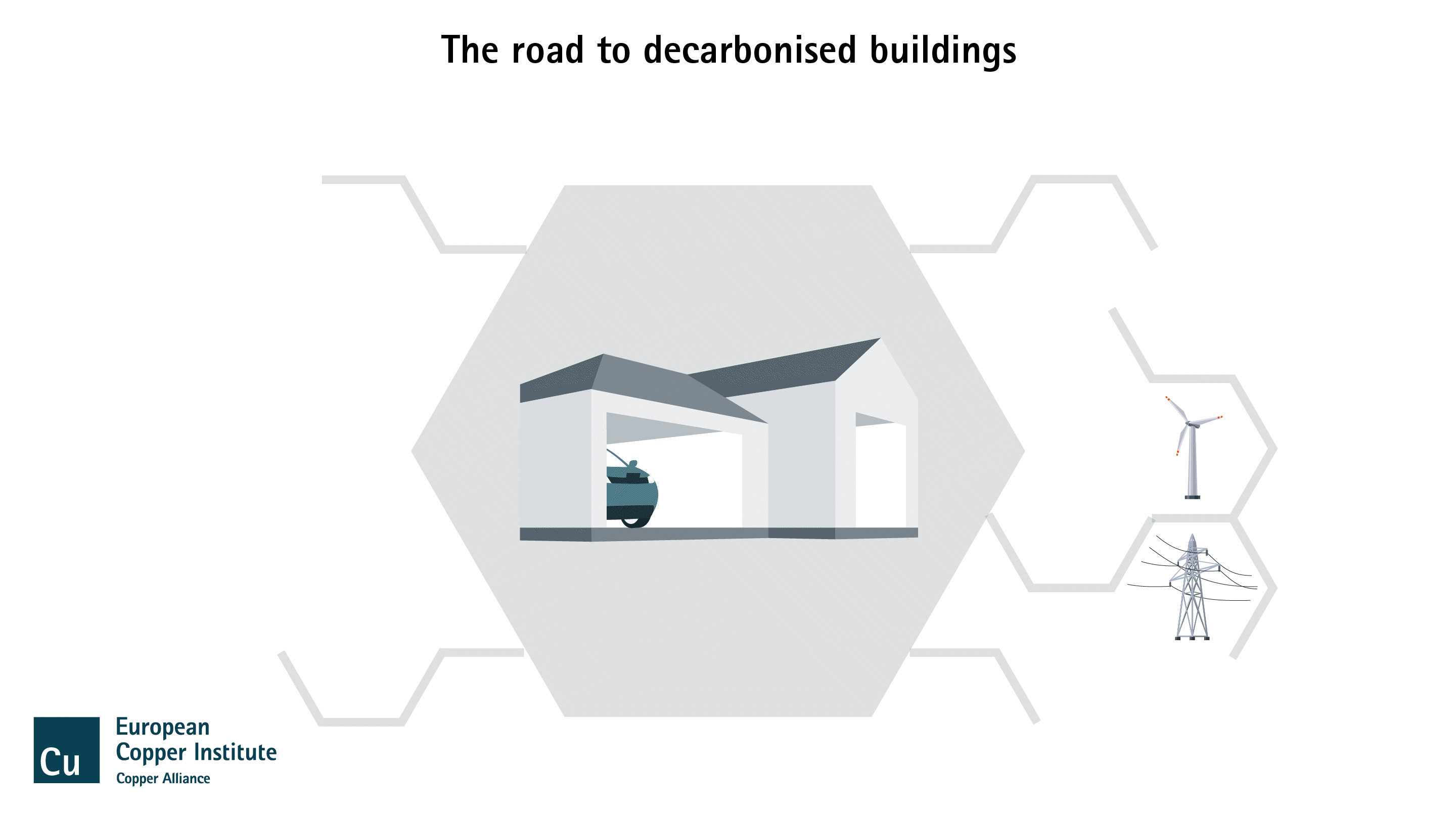Achieving climate neutrality by 2050 requires a boost in the rate and depth of building renovation in Europe.
Copper’s inherent properties make it a material of choice for decarbonized and sustainable buildings, and the copper industry strongly supports the European Green Deal’s ambition to build and renovate in an energy- and resource-efficient way.
![GHB-infographic-top-of-the-page[77] GHB-infographic-top-of-the-page[77]](https://internationalcopper.org/wp-content/uploads/2021/11/GHB-infographic-top-of-the-page77.jpg)
Featured Resources
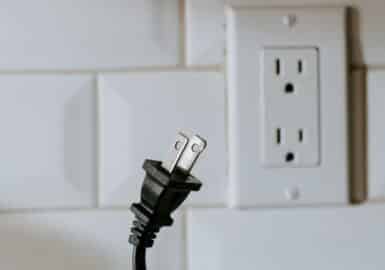
Electrical installations are paramount to achieve decarbonisation goals of EPBD
Reaction to the amendments adopted by the European Parliament on the recast of the Energy…
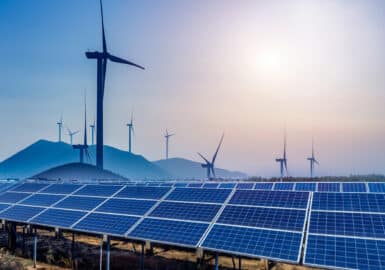
For a “Fit for 55” EPBD Recast Trilogue
Recommendations for the Trilogue on the Recast of the Energy Performance of Buildings Directive (EPBD)…

Achieving REPowerEU targets on rooftop solar and heat pumps through electrical installations
Scaling up solar installations and heat pumps in buildings are crucial measures to reduce EU’s…
Joint position paper of ECI and partners on the proposed recast of the Energy Performance of Buildings Directive (EPBD)...
Table of Contents
The Renovation Wave
Buildings account for approximately 40 percent of energy consumption and 36 percent of CO₂ emissions in the EU. More than 220 million building units, representing 85 percent of the EU building stock, were built before 2001. Projections indicate that 85 – 95 percent of today’s buildings will still be standing in 2050, highlighting the need for an increase in the rate and depth of building renovation to reach climate neutrality by 2050.
The European Commission’s Renovation Wave Strategy is at the heart of Europe’s post-Covid recovery and aims to green our buildings, create jobs and improve lives. The key targets are:
- By 2030, the EU wants to reduce greenhouse gas emissions from buildings by 60 percent, final energy consumption by 14 percent and energy consumption for heating and cooling by 18 percent.
- The Renovation Wave addresses the low rate of energy renovation—about one percent across the EU—with the aim to double the rate for both residential and nonresidential buildings by 2030.
- Mobilising forces at all levels will result in the renovation of 35 million units by 2030 and up to 160,000 additional green jobs created in the construction sector.
Read more on benefits and enablers of deep energy renovation
Copper Drives Deep Energy Renovation
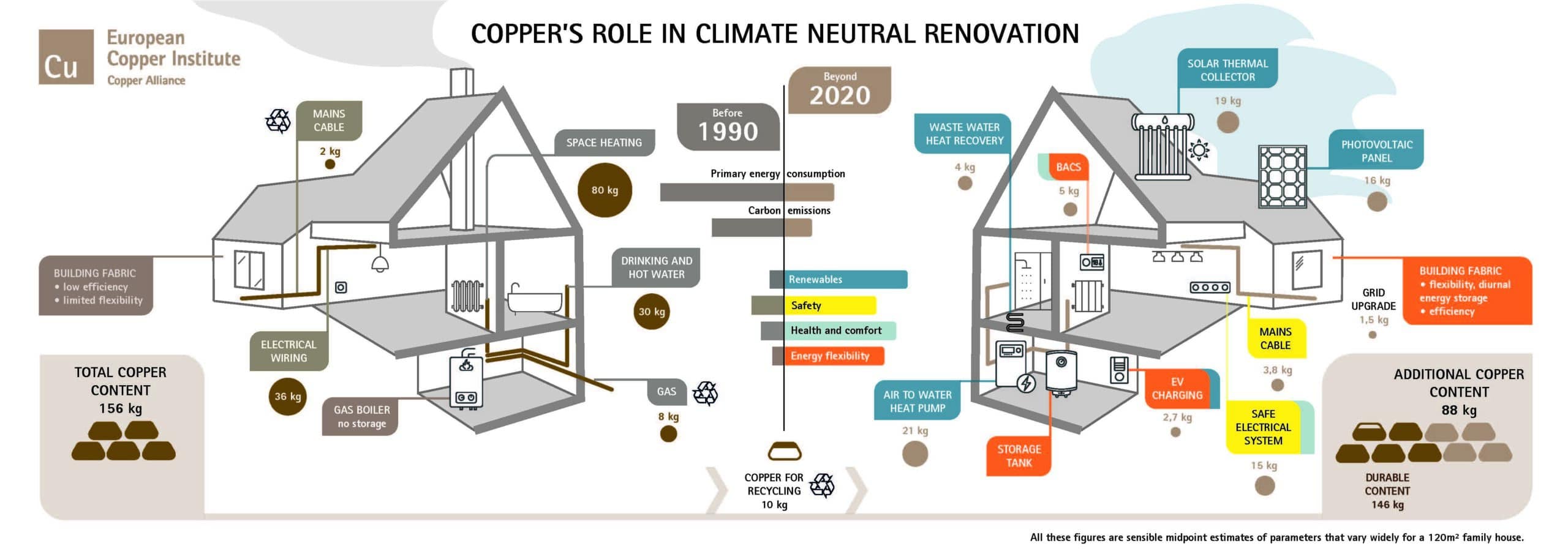
Many building applications and renovations require copper.
- Copper is a key material for safe electrical installations (wires and cables), electric vehicle (EV) charging infrastructure, renewable energy generation (photovoltaics) and storage (batteries).
- Copper improves the efficiency of heat exchangers in heat pumps, solar thermal systems and waste heat recovery systems.
- Copper wiring is fire resistant, and with proper sizing, it can improve efficiency.
- Copper is used in sensors, actuators and cables in building automation systems.
READ MORE ON COPPER'S ROLE IN:
- Decarbonisation of heating and cooling—detached houses
- Decarbonisation of heating and cooling—district heating in high density urban areas
- Building Automation—the missing link between carbon-neutral buildings and a smart and secure energy system
The Importance of Safe and Future Ready Electrical Installations
The role of electrical installations will become increasingly important in buildings because of:
- The electrification of heating and cooling
- The development of e-mobility charging infrastructure into buildings
- The development of on-site renewable power generation and storage
- The integration of buildings into smart grids
View our infographic: Electrical Installations are the Backbone of Decarbonised Buildings
High quality electrical installations in buildings must be considered as a prerequisite for the green energy transition based on following key considerations:
Electrical safety: Half of accidental residential fires have an electrical origin. They are all highly preventable via regular inspection of electrical installations. More details
Future-readiness: Electrical installations must account for the energy transition that will rely on increased electrification. Electrical installations need to be part of renovation plans and anticipate future needs, such as the installation of heat pumps, smart EV charging, PV panels or batteries. Information should be provided to occupants about the future readiness of the installation.
Economic cable sizing: In buildings, 64 TWh energy (two percent of electricity generated in the EU) is lost in behind-the-meter networks. Electrical installations should be considered as technical building systems (TBS) and designed for energy efficiency.
View the infographic: Economic Sizing of In-Building Electrical Installations
More info: Ecodesign for Power Cables in Indoor Electrical Installations
Smart sector integration: Highly efficient heat pumps, EV charging infrastructure, and renewable energy generation and storage needs to be smartly integrated into buildings and the grid to minimise congestion, consequent future upgrade investments and delays of the energy transition. Building Automation and Control Systems (BACS) are the missing link between carbon-neutral buildings and a smart and secure energy system. (More info: Building Automation: the missing link between carbon-neutral buildings and a smart and secure energy system)
Cable Sizing for Fire Conditions: Cables providing electrical power to live-saving equipment must guarantee they function under extreme temperatures to allow building occupants time to escape. Cable sizing for fire conditions is different from normal operating conditions because electrical resistance increases sharply as temperature rises. A correction factor must be introduced. (More info: Fire resistant cables on safety equipment)
Copper and Sustainable Buildings
Construction must become a circular activity. Sustainable renovation supports this process by reducing impacts over a building’s life cycle. Copper is a material of choice for sustainable buildings.
- Copper products can be recycled infinitely at end of life (EoL) and are already highly recycled. Approximately 50 percent of the copper used in Europe comes from recycling, and the scrap value chain is well established.
- Copper products are durable, reliable and repairable.
- The copper industry has an established a credible assurance framework, the Copper Mark to promote responsible production practices and demonstrate the copper industry’s commitment to the green transition.
- Copper has long-term availability.
Our Activities
The European Copper Institute (ECI) supports the renovation wave and is a partner of the Coalition for Energy Savings and of the Renovate Europe Campaign.
The European Commission is preparing a revision of the Energy Performance of Buildings Directive (EPBD), and ECI has provided input during the consultation process:
- Position and recommendations on the proposed recast of the Energy Performance of Buildings Directive (EPBD) – Position Paper
- Energy Performance of Buildings Directive Roadmap March 2021 – Position paper
- EPBD Workshop 1: Setting a vision for buildings and a decarbonised building stock—survey response April 2021 – ECI response
- EPBD Workshop 2: Minimum Energy Performance Standards for existing buildings—survey response April 2021 – ECI response
- EPBD Workshop 3: Strengthening building information tools (with focus on EPC)—survey response May 2021 – ECI response
- EPBD workshop 4: Fostering the green and digital transitions—survey response May 2021 – ECI response
- EPBD workshop 5: Accessible and Affordable Financing—survey response June 2021 – ECI response
- Energy efficiency in buildings—consultation on “renovation wave” initiative June 2020 – Position paper
Authored By

Quentin de Hults
Director
Green & Healthy Buildings

